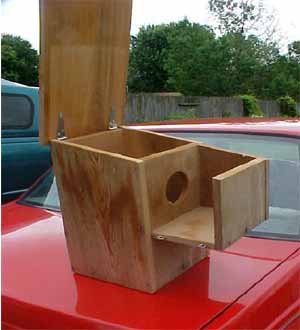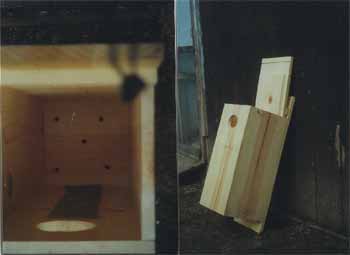 |

|
Currently there are no events or updates to display. |

Mandarin and Wood Duck Nest Boxes What follows is a series of pictures that illustrate the different designs of nest boxes that are used in the breeding programs of several successful breeders. While the exact dimensions differ somewhat, the common elements in the various designs include the following: they are constructed of rot resistant wood and/or are given protective coatings to increase moisture resistance. They all feature a removable lid to facilitate access to the eggs and cleaning ease. Also, each includes a hardware cloth piece inside to aid the ducklings in climbing out of the box.
Since Mandarins do not normally bring nesting materials to their nests, (in the wild they make use of leaf litter already found in most tree cavities) some material should be provided. Cedar shavings work well since they tend to repel insects. Pine shavings also work well. Do not use sawdust since it tends to compact and to easily become mildewed. Three or four inches of bedding should be about right. If one has pinioned or wing clipped breeding birds, a ramp made of 2 inch or three inch wide by 1 inch thick lumber should be provided. The ramp should either be notched on the upper surface or small cross pieces applied to provide the birds with traction. The minimum number of boxes to be provided would be one per pair but most breeders prefer to provide at least three for every two pairs because some pairs will reject either the box or it's location for no apparent reason. A number of states have used plastic nest boxes with success to encourage the breeding of wild Wood Ducks. I have heard from more than one breeder, however, that plastic nests are almost always rejected by Mandarins in captivity. The nest boxes should be in place well before the birds are expected to lay which may be as early as March in some parts of the country.
Originally published: 01-12-2004 Last updated: 11-01-2009 |
Copyright © 1997 - 2025 Acorn Hollow Bantams. All Rights Reserved. | Terms of Use | Privacy Policy



